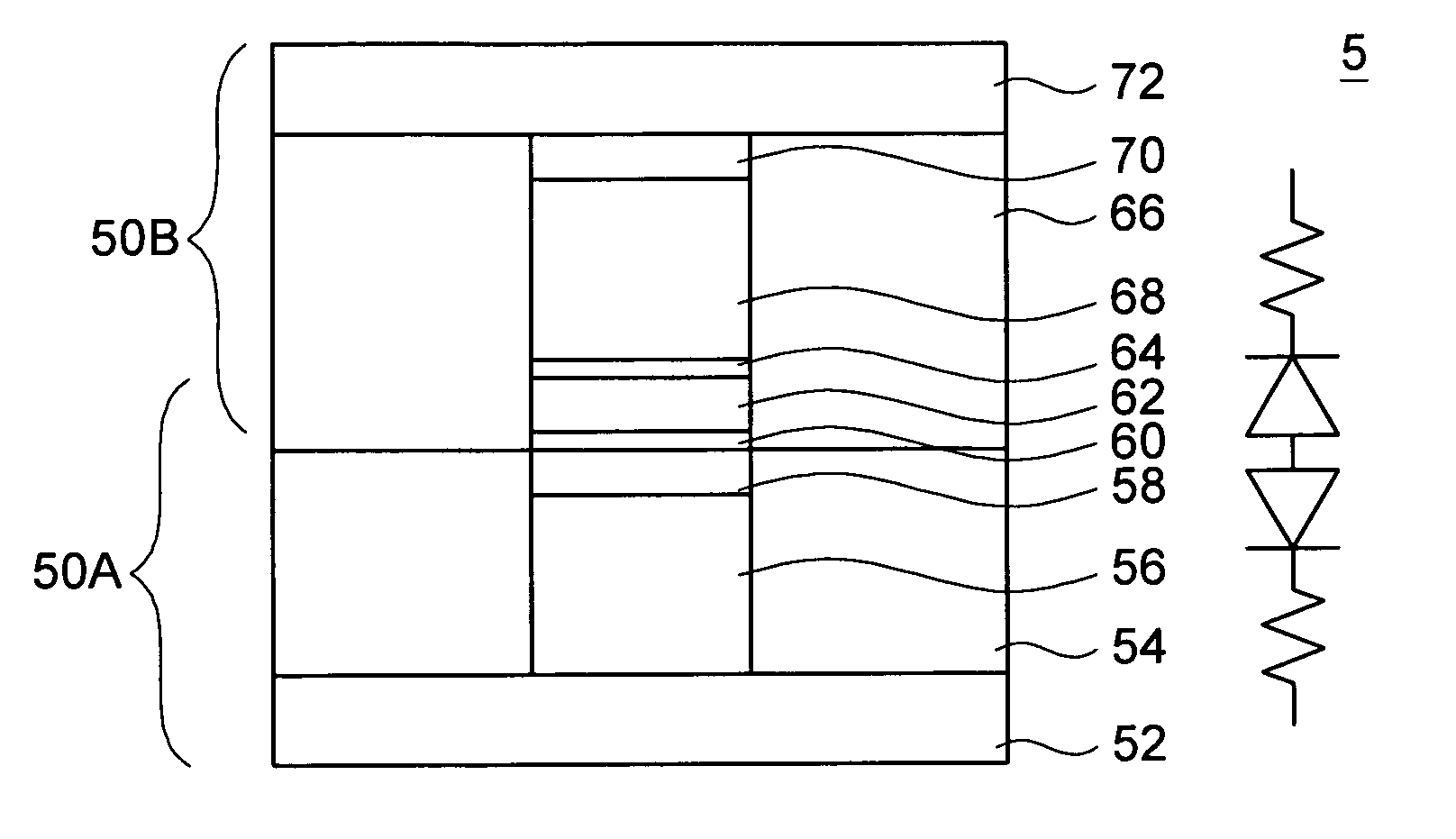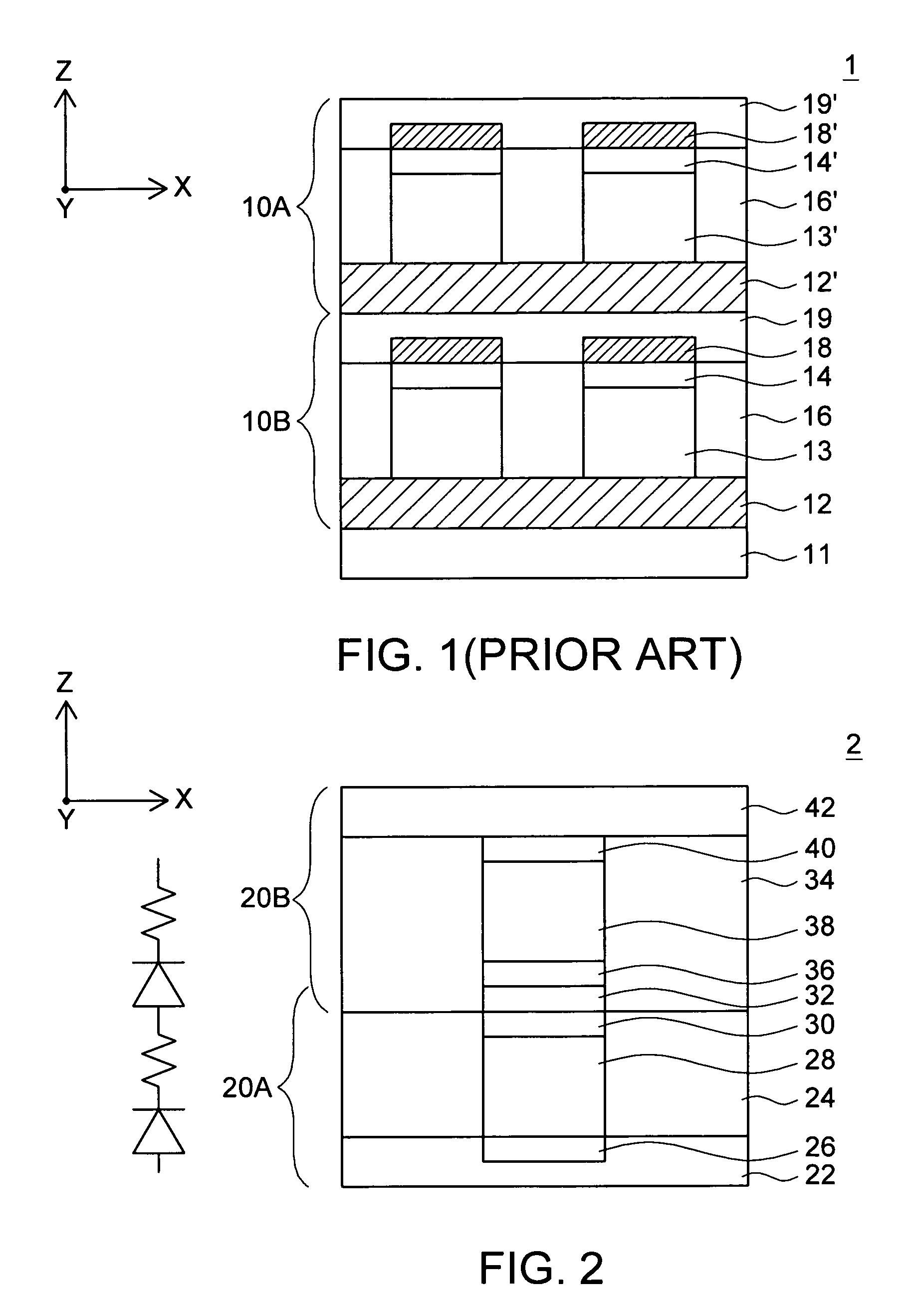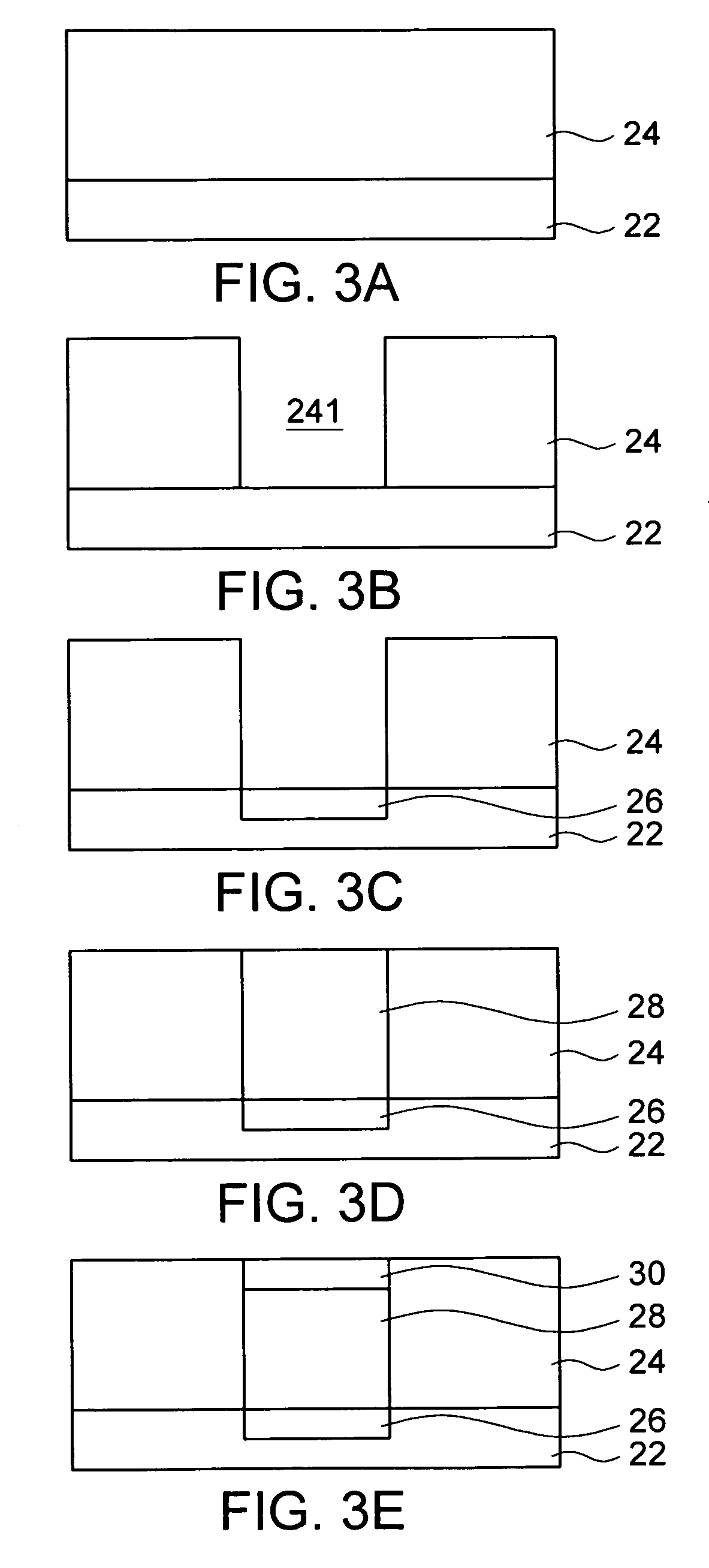Three-dimensional semiconductor structure
a three-dimensional, resistive random access memory technology, applied in semiconductor devices, digital storage, instruments, etc., can solve the problems of limiting the total size and applications of the memory, limiting the speed, the number, and the retention of the contents of the rom, so as to achieve a simple and low-cost method
- Summary
- Abstract
- Description
- Claims
- Application Information
AI Technical Summary
Benefits of technology
Problems solved by technology
Method used
Image
Examples
first embodiment
[0027]FIG. 2 schematically shows a cross-sectional view of a three-dimensional (3D) semiconductor structure according to the first embodiment of the present invention. As shown in FIG. 2, the 3D semiconductor structure 2 is constructed by vertically stacking at least two memory cells 20A and 20B, and the second memory cell 20B is stacked on the first memory cell 20A. The first memory cell 20A could be supported by a base layer (not shown) made of insulation material. Alternatively, the base layer is formed on a substrate (not shown), in which the base layer and the substrate support the 3D semiconductor structure 2.
[0028]The first memory cell 20A includes a first conductive line 22, a first doped region 26, a first metal layer 28, a first metal oxide layer 30, and a second conductive line 32 opposite to the first conductive line 22. The first conductive line 22 and the second conductive line 32 could be the P-type conductive lines. The first doped region 26, such as a N-doped region...
second embodiment
[0044]FIG. 4 schematically shows a cross-sectional view of a three-dimensional (3D) semiconductor structure according to the second embodiment of the present invention. As shown in FIG. 4, the 3D semiconductor structure 5 is constructed by vertically stacking at least two memory cells 50A and 50B. The structures of the first and second embodiments are similar, except the positions of the diode elements are slightly modified in the first and second memory cells 50A and 50B.
[0045]As shown in FIG. 4, the first memory cell 50A includes a first conductive line 52, a first metal layer 56, a first metal oxide layer 58, a first doped region 60, and a second conductive line 62 opposite to the first conductive line 52. The first conductive line 52 and the second conductive line 62 could be the P-type conductive lines. The first metal layer 56 is formed on the first conductive line 52, and the first metal oxide layer 58 is formed on the first metal layer 56. The first doped region 60, such as ...
third embodiment
[0058]FIG. 6 schematically shows a cross-sectional view of a three-dimensional (3D) semiconductor structure according to the third embodiment of the present invention. The 3D semiconductor structure 6 of the third embodiment is similar to the 3D semiconductor structure 2 of the first embodiment, except that each memory cell of the third embodiment includes plural memory elements so as to fabricate a 3D semiconductor structure with multi-level cells (MLC, i.e. each memory cell capable of storing a plurality of bits). The elements of FIG. 6 identical to the elements of FIG. 2 are designated with the same reference numbers. Also, the method of fabricating the semiconductor structure 6 of the third embodiment could be referred to the description in the first embodiment.
[0059]According to the 3D semiconductor structure 6 of the third embodiment (FIG. 6), the first memory cell 60A comprises at least two memory elements (i.e. two multi-layer units), including a first multi-layer unit 281 (...
PUM
 Login to View More
Login to View More Abstract
Description
Claims
Application Information
 Login to View More
Login to View More - R&D
- Intellectual Property
- Life Sciences
- Materials
- Tech Scout
- Unparalleled Data Quality
- Higher Quality Content
- 60% Fewer Hallucinations
Browse by: Latest US Patents, China's latest patents, Technical Efficacy Thesaurus, Application Domain, Technology Topic, Popular Technical Reports.
© 2025 PatSnap. All rights reserved.Legal|Privacy policy|Modern Slavery Act Transparency Statement|Sitemap|About US| Contact US: help@patsnap.com



